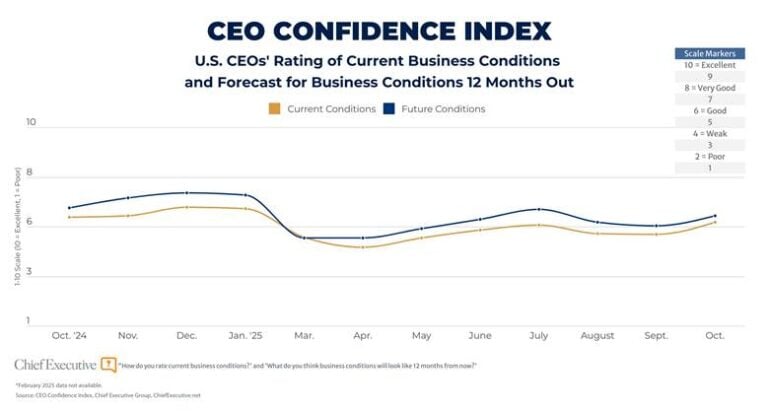
 It’s amazing that an acronym as ubiquitous and commonly used as “CEO” can remain so poorly understood. After two decades of working with chief executives, I have to say that there is still far too much ambiguity about what the word “executive” means and what the role really entails.
It’s amazing that an acronym as ubiquitous and commonly used as “CEO” can remain so poorly understood. After two decades of working with chief executives, I have to say that there is still far too much ambiguity about what the word “executive” means and what the role really entails.
This is not merely a semantic problem; it leaves organizations confused about what is expected of the person in charge and leads to gaps in responsibility and performance. Believe it or not, it leaves plenty of well-intentioned CEOs unclear about their most critical responsibilities.
So, let’s define the “E.” Einstein’s theory of relativity was E = MC2. When it comes to the E in CEO, I’d say E = LMC2. I promise I wasn’t trying to force fit the letters to match the scientific theory. I believe there are four primary responsibilities that encompass the CEO’s role, and these four letters—L, M and two Cs—capture those best.
I realize this word can seem vague or soft. For a CEO, leadership is about inspiring others to care about the purpose of the organization and the well-being of customers or constituents. It’s about taking risks and being accountable for the success of the organization and the future of its people. It is the most broad of the four, and it could be said that every other responsibility falls beneath it. I would agree. In fact, I honestly believe that the term Chief Leadership Officer would be a much better title for the person at the top. The other three letters clarify the key components of the L.
There is nothing vague about this. I’m referring to the discipline of managing one’s direct reports, knowing what they’re doing, how they’re doing, and ensuring that they get what they need to succeed in the event of problems. If the CEO of a company does not actively manage his or her team members—this is far, far more common than one would think—it sets a tone for the way people deeper in the organization will or will not be managed.
It is the CEO’s job, and no one else’s, to ensure that the culture of the organization is clearly defined and strictly adhered to. That means he or she must lead the effort to establish the organization’s values and make the behaviors that align with those values clear. This is no mere exercise in choosing words for posters or t-shirts, but drawing clear lines around what behaviors are acceptable and unacceptable for all employees.
(This is starting to sound like a Sesame Street song from my childhood). The CEO is the primary vessel of communication for employees, providing clarity and context about where the organization is headed, what challenges it faces, what its priorities are. All of this leads me to focus on another “C” in the CEO acronym, the one that stands for “Chief.”
The CEO is not the “sole” leadership, management, culture and communication officer. He or she is undoubtedly the primary arbiter of those critical responsibilities. But a big part of leadership is inspiring others to lead. Too many CEOs unwittingly take on the sole responsibility for pushing the organization forward and ensuring accountability around performance and values. This is a recipe, and a popular one, for burnout and resentment. Ironically, one of the most important aspects of leadership is ensuring that other leaders in the organization, especially those toward the top, share in the burden of leadership. But that cannot and will not happen if the CEO doesn’t understand and embrace the L, M, C and C.



0

1:00 - 5:00 pm
Over 70% of Executives Surveyed Agree: Many Strategic Planning Efforts Lack Systematic Approach Tips for Enhancing Your Strategic Planning Process
Executives expressed frustration with their current strategic planning process. Issues include:
Steve Rutan and Denise Harrison have put together an afternoon workshop that will provide the tools you need to address these concerns. They have worked with hundreds of executives to develop a systematic approach that will enable your team to make better decisions during strategic planning. Steve and Denise will walk you through exercises for prioritizing your lists and steps that will reset and reinvigorate your process. This will be a hands-on workshop that will enable you to think about your business as you use the tools that are being presented. If you are ready for a Strategic Planning tune-up, select this workshop in your registration form. The additional fee of $695 will be added to your total.

2:00 - 5:00 pm
Female leaders face the same issues all leaders do, but they often face additional challenges too. In this peer session, we will facilitate a discussion of best practices and how to overcome common barriers to help women leaders be more effective within and outside their organizations.
Limited space available.

10:30 - 5:00 pm
General’s Retreat at Hermitage Golf Course
Sponsored by UBS
General’s Retreat, built in 1986 with architect Gary Roger Baird, has been voted the “Best Golf Course in Nashville” and is a “must play” when visiting the Nashville, Tennessee area. With the beautiful setting along the Cumberland River, golfers of all capabilities will thoroughly enjoy the golf, scenery and hospitality.
The golf outing fee includes transportation to and from the hotel, greens/cart fees, use of practice facilities, and boxed lunch. The bus will leave the hotel at 10:30 am for a noon shotgun start and return to the hotel after the cocktail reception following the completion of the round.